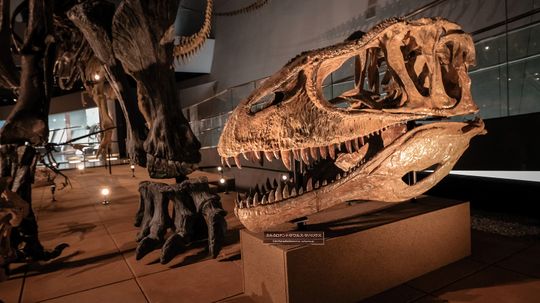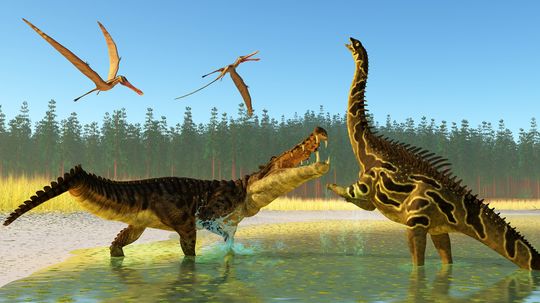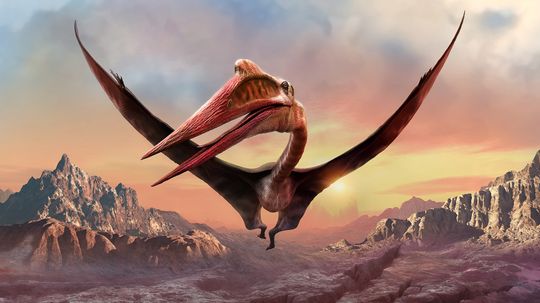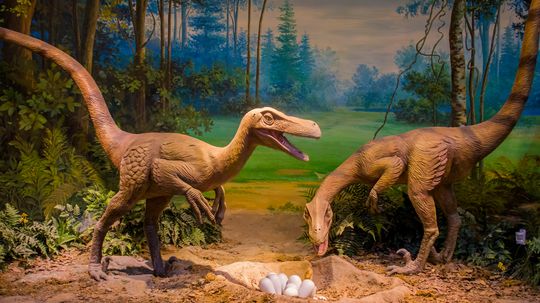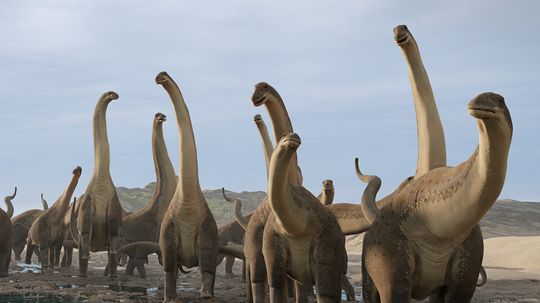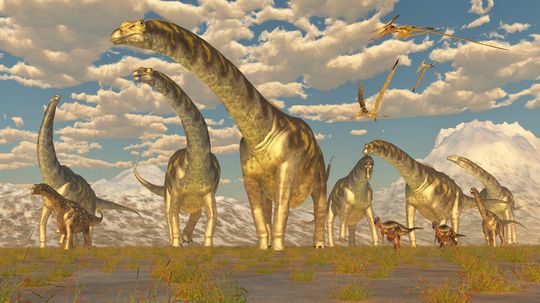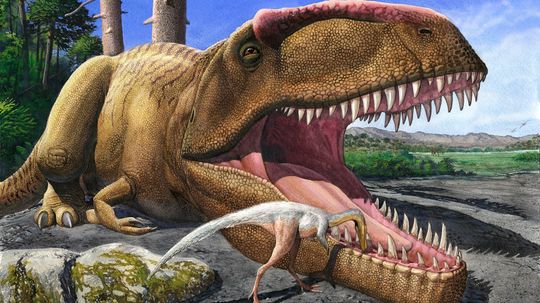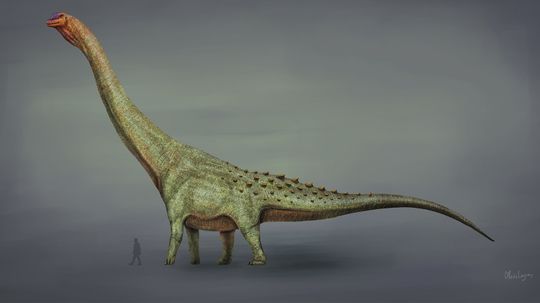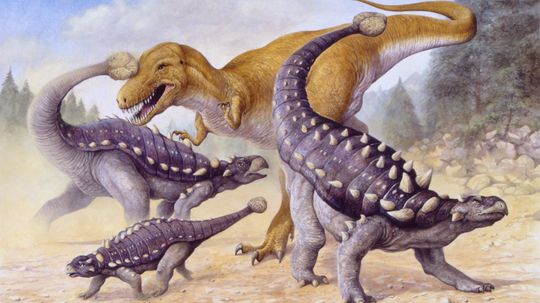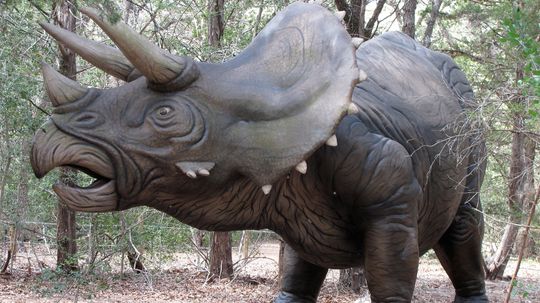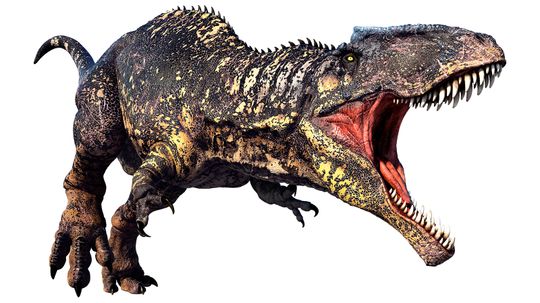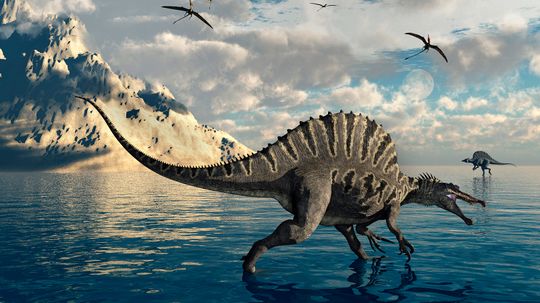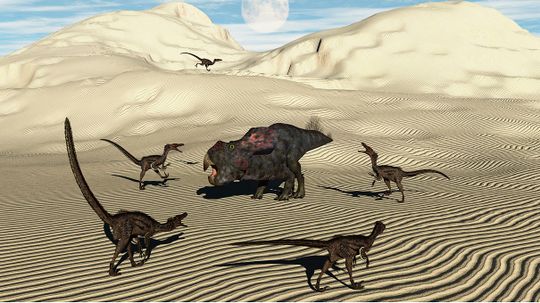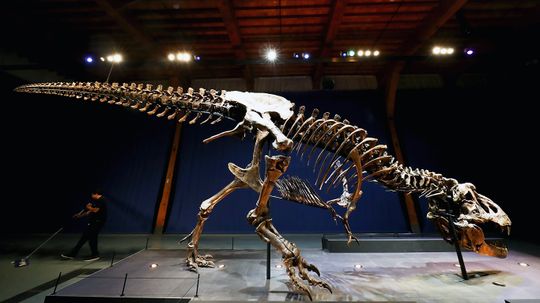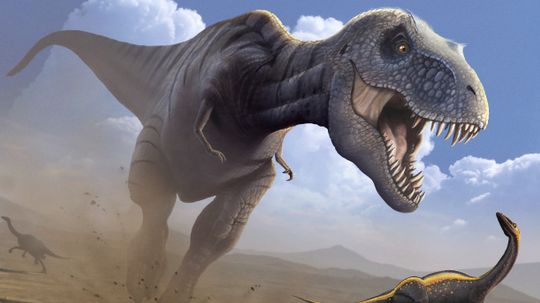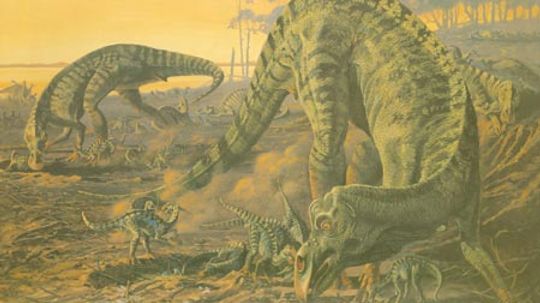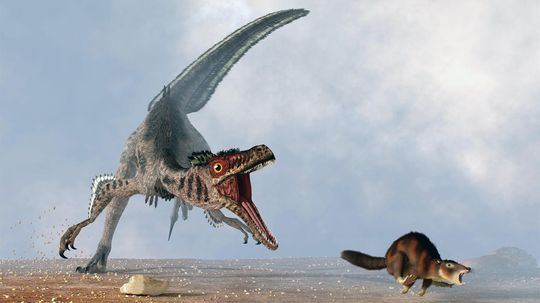Late Cretaceous Dinosaurs
A period of great transformation, the Late Cretaceous Period is when the dinosaurs disappeared from the earth. Learn more about the Late Cretaceous dinosaurs that existed during this era, such as the Tyrannosaurus, Gallimimus, and Brachylophosaurus.

12 Scariest Dinosaurs You'd Want to Avoid While Time Traveling
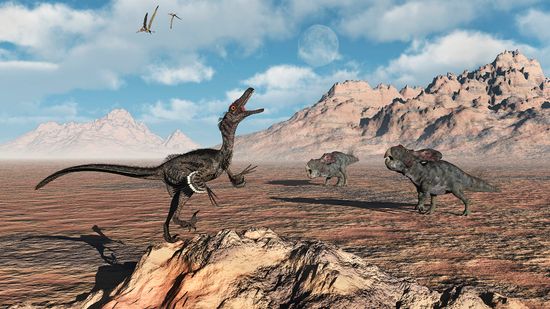
The Smartest Dinosaur (and 9 More Clever Prehistoric Reptiles)
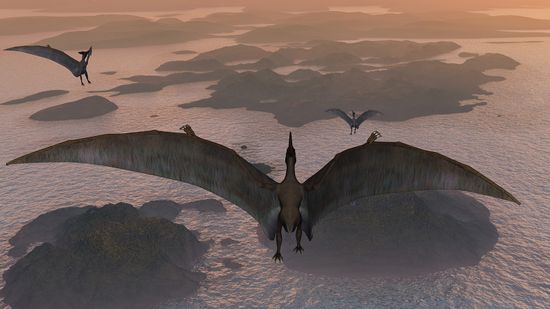
Pteranodon vs. Pterodactyl: Comparing Non-dinosaur Species
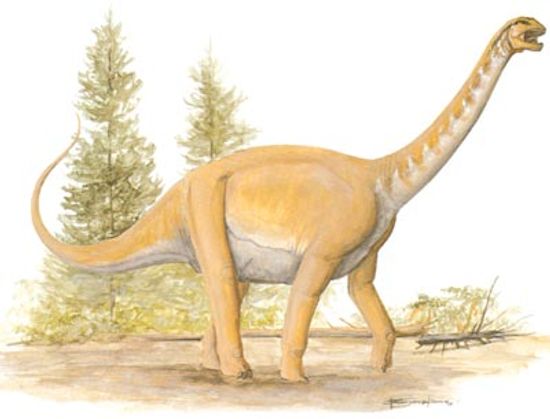
Barapasaurus
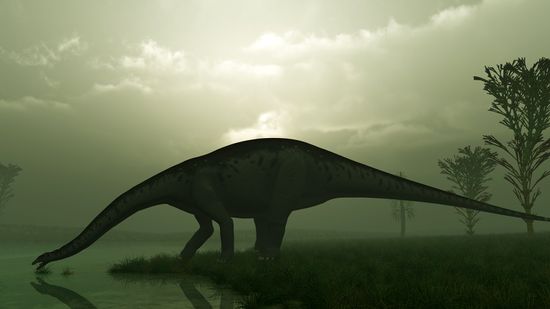
Brontosaurus vs. Brachiosaurus: Comparing Long Necks
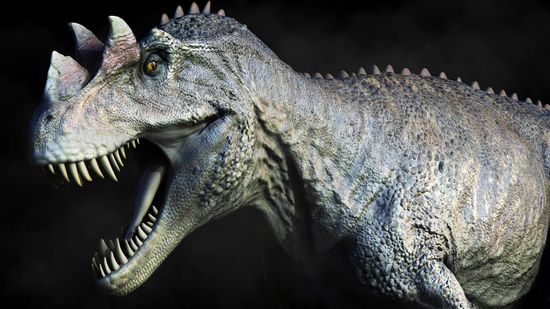
Ceratosaurus: The Horned Lizard of the Jurassic Period
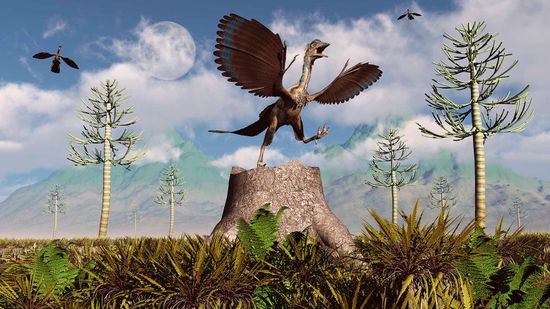
Meet Archaeopteryx, a Feathered Dino With Wings and Teeth
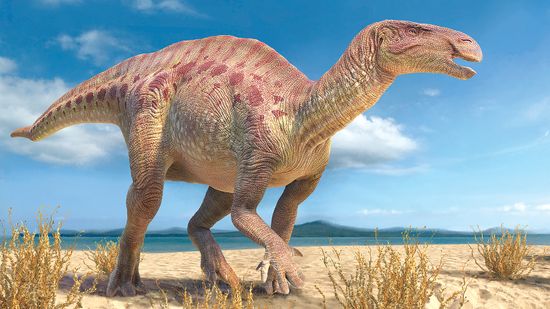
Iguanodon Skeletons Are the Most Complete of Any Dinosaur
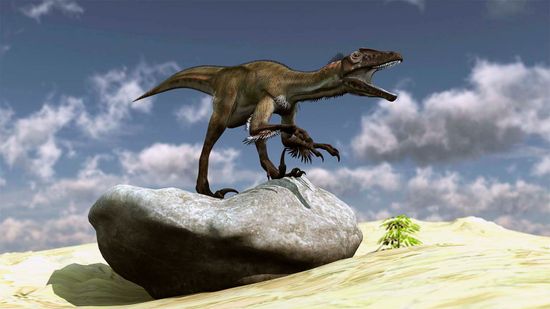
Utahraptor: The Salty Saga of a Killer Dinosaur
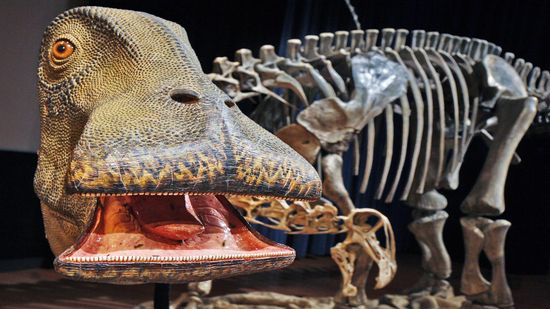
Nigersaurus: The 'Mesozoic Cow' With More Than 500 Teeth
Learn More
Today, we're diving deep into the world of Carcharodontosaurus, one of the most fearsome meat-eating dinosaurs to ever roam the Earth.
By Zach Taras
Travel back about 95 million years ago to the Late Cretaceous period, and you might just find a "boar crocodile" called the kaprosuchus.
By Ada Tseng
Quetzalcoatlus northropi wasn't just big; it was ginormous! As the largest flying animal yet discovered, Quetzalcoatlus continues to fascinate paleontologists and average people alike.
By Zach Taras
Advertisement
Troodon, a theropod dinosaur, has captured the curiosity of paleontologists for decades. Known for its sharp wits and fascinating features, Troodon possesses some of the most intriguing traits of the dinosaur world.
By Mack Hayden
That's the titanosaur, one of the largest land animals to ever exist, dwarfing nearly everything around it. Roaming the planet during the Late Cretaceous period — approximately 100 million years ago — titanosaurs are part of a family of sauropod dinosaurs known for their massive size, long necks and incredible diversity.
By Talon Homer
Argentinosaurus is one of the largest known dinosaurs to have ever walked the Earth, and its sheer size captures the imagination of scientists and enthusiasts alike.
By Talon Homer
They lived about 30 million years apart and never set foot on the same continent. Yet Giganotosaurus carolinii is always getting compared to the world's most popular dinosaur, the beloved and well-known Tyrannosaurus rex, both vying for the position of the largest carnivorous dinosaur in history.
By Mark Mancini & Talon Homer
Advertisement
The next time a 4-year-old asks what the biggest dinosaur ever was, you can respond confidently: It was the titanosaur Patagotitan mayorum (simply "Patagotitan" for short), a colossal creature that lived more than 100 million years ago during the Late Cretaceous period.
By Ada Tseng
Tyrannosaurus rex, one of the fiercest meat-eaters ever, is the animal that probably springs to mind when most of us hear the word "dinosaur."
By Mark Mancini
Ankylosaurus was a dinosaur with short, squat legs that allowed it to run at about 6 miles per hour - fast, but not fast enough to outrun a large carnivorous predator like Tyrannosaurus rex.
Triceratops - which literally means "three-horned face" - is one of the most spectacular and well-known of all dinosaurs. It shared the Cretaceous landscape with, and probably was preyed upon by, Tyrannosaurus rex.
By Mark Mancini
Advertisement
Constantly compared to the Tyrannosaurus rex, the Giganotosaurus was one of a handful of dinosaurs that rivaled, or possibly exceeded, the creature in size.
By Talon Homer
The villainous dinosaur from 'Jurassic Park' probably never had an affinity for water.
By Mark Mancini & Talon Homer
Scientists are at odds about whether Velociraptors worked together to take down their prey.
By Mark Mancini
Tyrannosaurus rex was a giant predator that roamed the earth, so why did it have such tiny arms?
By Mark Mancini
Advertisement
OK, hop in your time machine and go back 67 million years or so to the Cretaceous period. Then find a Tyrannosaurus rex and challenge it to a race. Sounds crazy, huh? Could you really outrun a Tyrannosaurus rex?
Since it was named in 1979 by John Horner and Robert Makela, Maiasaura has become one of the most famous dinosaurs. It has provided information about how it cared for its young and the early development of dinosaurs. Learn more about the Maiasaura.
The Velociraptors in "Jurassic Park" were roughly the size of humans. In reality, they were about the size of an average turkey.
By Mark Mancini
